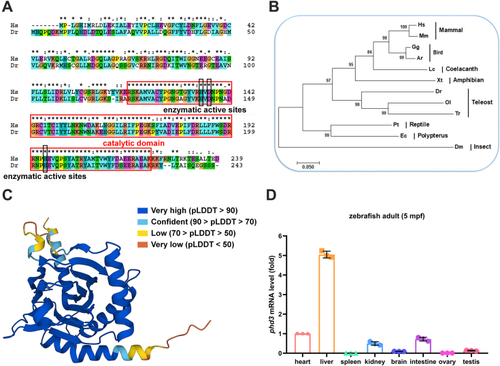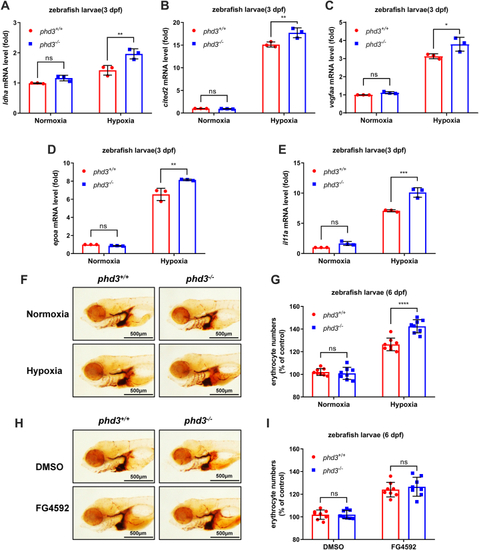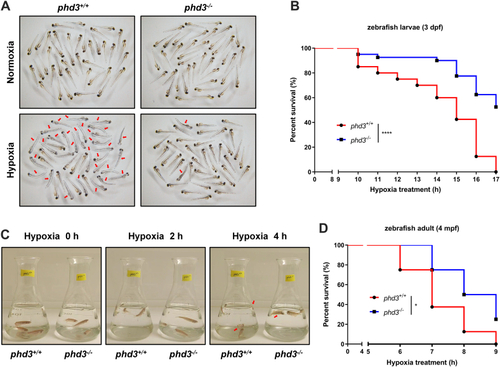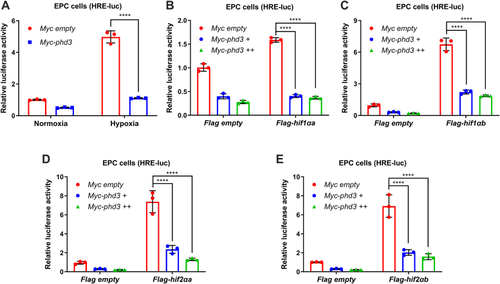
Zebrafish phd3 is induced under hypoxia.A, qPCR analysis of the prolyl hydroxylase genes (PHDs), including phd1, phd2a, phd2b, and phd3 mRNA in zebrafish larvae (3 days post-fertilization, dpf) under normoxia (21% O2) or hypoxia (2% O2) for 5 h. B, qPCR analysis of hypoxia-responsive genes in zebrafish larvae (3 dpf), including ldha, cited2, and vegfaa under normoxia (21% O2) or hypoxia (2% O2) for 5 h. C, qPCR analysis of the PHD genes in ZFL cells, including phd1, phd2a, phd2b, and phd3 under normoxia (21% O2) or hypoxia (1% O2) for 24 h. D, qPCR analysis of hypoxia-responsive genes in ZFL cells, including ldha, cited2, and vegfaa under normoxia (21% O2) or hypoxia (1% O2) for 24 h. E–G, qPCR analysis of phd3 (E), ldha (F), and vegfaa (G) in ZFL cells transfected with Flag empty, Flag-hif1αa, Flag-hif1αb, Flag-hif2αa, or Flag-hif2αb for 24 h. ns, not significant; ∗p < 0.05, ∗∗p < 0.01, ∗∗∗p < 0.001, ∗∗∗∗p < 0.0001, using unpaired Student's t test; Data are representative of three independent experiments (mean ± SD of three technical replicates).
|








